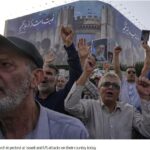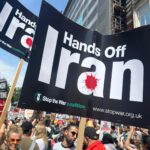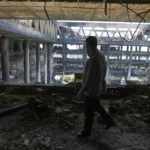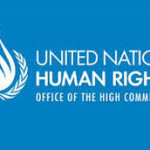
As mass protests continue to be a feature of life in Iran the threat of military intervention is in danger of neutralising their impact and playing into the hands of the regime. Jane Green considers the issues.
Massive popular protests in Iran, which began at the turn of 2017-2018, have been the starting point for a struggle across Iran’s industry and workforce, which shows no sign of abating. In addition to their pressing demands for unpaid wages and salaries, working people have also targeted the policies of regime. Protests have continued to target widespread privatisation, corruption and the plunder of national resources.
The growth and spread of workers’ protests has been one of the important features of the country’s political scene in the past two years. The implementation of anti-popular policies such as privatisation and economic liberalisation were imposing very tough conditions for Iranian workers even before the US withdrawal from the Joint Comprehensive Plan of Action (JCPOA) and the subsequent extension of even greater sanctions upon Iran.
Since then oil exports have more than halved and the Iranian currency has lost more than 60% of its value against the US dollar. The cost of red meat and poultry has increased by 57%, access to medical supplies is restricted, forcing doctors to prescribe less effective drugs, and waiting times for operations has increased.
Poverty, unemployment and lack of job security have been exacerbated further due to US sanctions and are the main factors behind the ongoing protests. Continuous devaluation of the currency coupled with inflation has brought more poverty to an already struggling working class.
The flight of capital from Iran has accelerated. Difficulties in obtaining spare parts from industrial countries in the West has caused a number of key industries to stop production. Banking and monetary sanctions have crippled any possibility of conducting international trade. All these consequently worsen the economic conditions in Iran and it is the workers who pay the price through mass lay-offs, not being paid for months and inflationary pressures.
One of the consequences of recent labour unrest has been the revival of claims for trade union rights in parallel with other immediate demands.
The Islamic Republic of Iran does not tolerate the operation of trade unions. The country’s labour law has been interpreted by the clerical regime in such a way as to only permit regime-controlled “Islamic Labour Councils” to operate openly in workplaces. The structures of these bodies are designed so that the workers representatives are always outnumbered two to one by their government and employer counterparts.
The current struggle in Iran stresses the intensification of trade union rights and the revival of independent unions, based on ILO Conventions 87 and 98 and the Universal Charter of the Rights of Trade Unions.
One of the most important aspects of the trade union movement, in addition to meeting the demands of workers welfare, is the struggle for democratic rights, namely freedom of association, for unions, political parties and organisations, as well as freedom of speech.
In this context it is vital that the opposition movement inside Iran can operate free from outside interference or the threat of external military intervention, as is currently the danger with the bellicose actions of the United States in the region.
Any attempt by the United States or its allies in the region, Israel or Saudi Arabia, to intervene militarily in Iran will be used by regime hardliners to demonise those fighting for democracy and social justice inside the country, when it is faced with an external threat.
Such a scenario will also play into the hands of the White House hawks who see regime change as the only way forward in Iran. The opposition movement is intent on regime change but is intent on change determined by the Iranian people, not the US government or military.
In effect the United States is already fighting an undeclared war against Iran. It may not have involved any military intervention or direct loss of life, but it is an economic war intended to create the conditions for military action should that be deemed necessary.
Support for the Iranian people, in their struggle for democratic rights and social justice, must go hand in hand with opposition to US military intervention in Iran and a call for resolving any differences by diplomatic means. A military solution is no solution for the people of Iran, it is no solution for the wider issues in the Middle East and must be opposed as a threat to world peace.



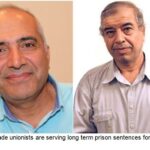









 Posted in
Posted in 
